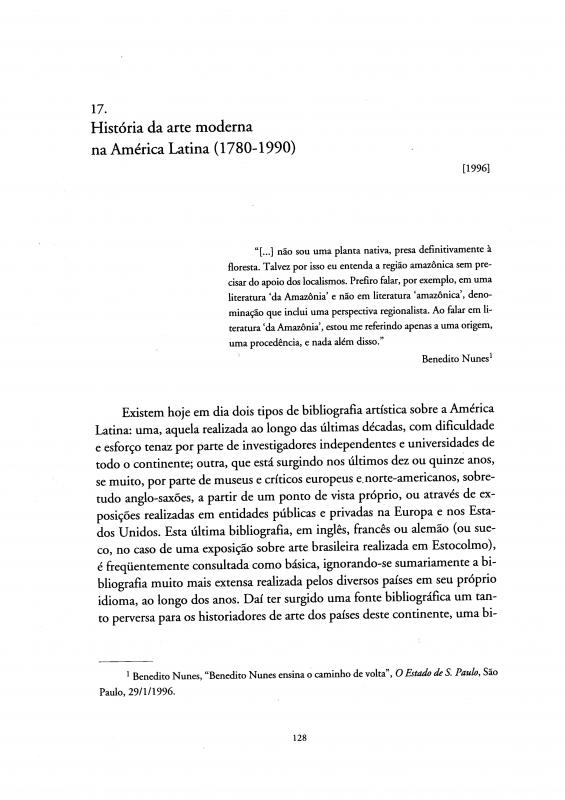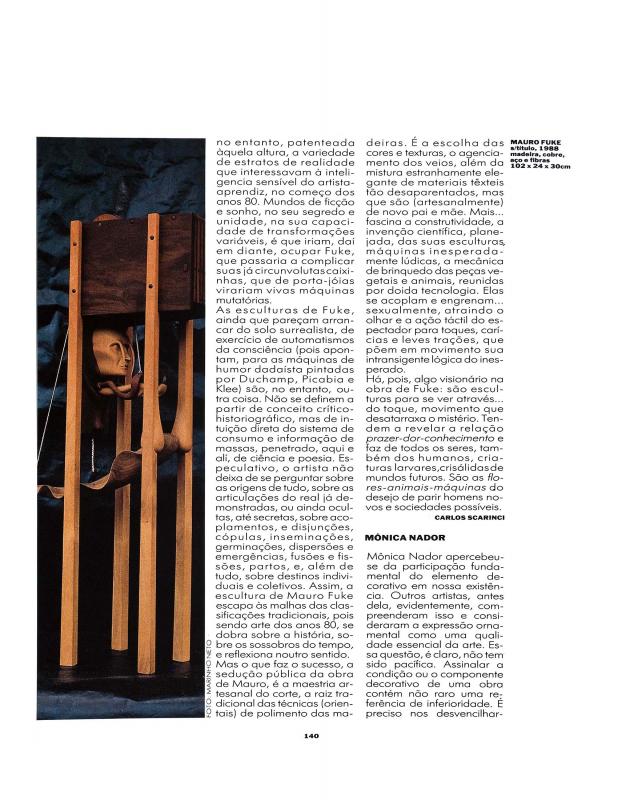The artists Mônica Nador, Sérgio Romagnolo, Leda Catunda, and Ana Tavares, as well as Ciro Cozzolino and Sérgio Niculitcheff participated in Pintura como Meio, the exhibition that was organized in 1983 at the Museu de Arte Contemporânea da Universidade de São Paulo, by the art historian and art critic Aracy Abreu Amaral (b. 1930) who, at the time, was the director of the museum. Since 1975, Amaral has taken a keen interest in Latin American art. She attended the Austin Symposium in Texas, where she established relationships with Latin American critics including Marta Traba, Juan Acha, and Damián C. Bayón, who piqued her interest in the “identity” aspect of art that was very much in vogue during the 1970s. In her opinion, in the article “Modernidade e identidade: as duas Américas Latinas ou três, fora do tempo”—[see doc. no. 776159]—“what is ‘new’ is duty-bound to express self-affirmation, and is intimately associated with the idea of what is ‘Brazilian’ and what is ‘traditional,’ and with the concept of ‘internationalism’.” In another of her essays, [doc. no. 776227], Amaral remarks on the ambiguity she detects in the use of the term “art” throughout Latin America, nonetheless recognizing the development of a group identity and the “hybrid” nature of the various cultures involved.
Her term at the MAC—Universidade de São Paulo reinforced the views of the previous administration under Professor Walter Zanini (1925–2013) by encouraging the younger generations and fostering experimental work and research beyond the fields of conventional painting and sculpture. On this matter, see Zanini’s essay on one of the artists of the Geração 80: “Mônica Nador” [doc. no. 1111277].
The above-mentioned exhibition is considered early evidence of the commercially driven retreat in the 1980s that was known as the “return to painting.” Among the avant-garde this situation was historically referred to as a “retour à l’ordre.” The exhibition focused on works associated with the international trans-avant-garde (endorsed by the Italian critic Achille Benito Oliva, ABO) and the Neo-Expressionist movement. The artists represented at this event were trained by a couple of artist-professors at the FAAP (Fundação Armando Álvares Penteado) in São Paulo.
The Arte Híbrida exhibition includes the three artists mentioned above as well as Mônica Nador, an artist for whom the term “hybrid”—still mutating or impure—means something that is inherently part of Brazilian art. On this matter, see also Romagnolo’s personal views expressed in his essay “Arte híbrida,” one of the chapters in his book that bears the same name (Río de Janeiro, São Paulo, and Porto Alegre, FUNARTE, MAM-SP, BFB, 1989).



